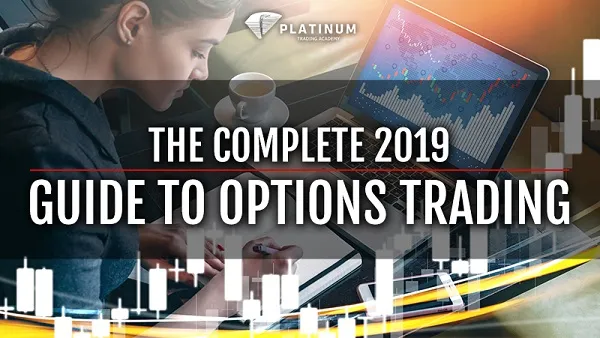
Hello Traders,
There seems to be quite simplistic and straight to the point of understanding of the term “investment”. Investments, to many people, only circle around the confines of buying stocks on the stock market. This is why when unfamiliar terms such as options trading come up in conversation, most people are likely not aware of what it means or rally entails.
In a nutshell, options trading is one of the high risks, yet high-reward moves you can make when it comes to trading. It can seem extremely overwhelming at first, but it only takes knowing a few key points to master this. If you want to learn how to trade options, It may seem daunting, but trust us: you are on the way to becoming a smart investor if you are considering options trading!
As a beginner, learning to trade options is definitely a way for you to take your investing skills and knowledge to a whole new level. Options trading may present a completely different perspective compared to mutual funds or trading stocks, but grasping some options trading strategies can definitely boost your investments.
What is Options Trading?

We have already stressed just how beneficial options trading can be, so let's deliver a little deeper to improve our understanding. Essentially, an option is a form of contract between the seller and the buyer, in terms of a particular investment or stock. There is an allotted time frame in which the buyer of the said option has the power or right to force the seller of the option to enforce or do whatever is stated in the contract, only within the specified time frame. Once the buyer exercises the option, the seller then must follow the instructions set forth by the option.
So, an option allows an investor to buy or sell an underlying instrument such as ETF, securities and other with a predetermined price over a specific period of time. The act of buying and selling options is done in an options market that trades contracts based on securities. A call option is a move that you can make later on to buy shares after you have bought an option. On the other hand, buying an option that will enable you to purchase shares at a later time is called a put option.
The call option of a particular stock will enable the option buyer to buy a set number of shares at a certain price, at any time as long as it is prior to the specified expiration date. The option seller then must sell the stock to the option buyer, should the buyer choose to exercise that right.
When considering the options trading market, here is where the advantage for buyers comes in: as the name suggests, options trading gives the buyer the right to exercise the contract, but he is not forced to do so. Thus, the options buyer has the discretion to only purchase the stock when he or she feels that it is the right move to do so. Options trading allows you the space to decide whether or not a stock is worth it, while also affording you the security of the contract, should you decide that you want to purchase the stocks.
Pros of Options Trading

Nasdaq’s options trading tips says that options are often more resilient to changes and plummets in terms of market prices. They can help you increase income on current and future investments, as well as avail you of better deals in terms of equity varieties. However, the biggest pro is probably that it can help you capitalise on the equity rising or dropping over time, without having to directly invest in it!
Options trading is able to give you a form of leverage whenever you invest. No matter how long you have been in the trading market, there is one truth that prevails age and experience: everybody wants to get their money’s worth, and more. In this regard, an options contract will be able to give you a more value-friendly exposure to a stock, rather than buying shares right away. Doing the latter can only magnify and enhance any profits or losses should the market fluctuate unpredictably.
Options trading will also be able to improve your overall portfolio by minimising risks. An example of this is if you combine buying a put option to sell stock at a certain price with ownership of the shares as well. That trade is more commonly known as the protective put, which can give you the upside should the stock price increase, but it will also be able to protect you from notable losses should the stock price fall.
Options can also provide you with a source of portfolio income. Since you will not be buying options, but rather selling them, you will be the one to receive compensation for the option. Even if the power to buy in the options contract goes unexercised, you will be able to keep the payment for holding up your end of the bargain.
Cons of Options Trading

As we mentioned, options trading can be a high risk, high reward trading strategy. Since we have already highlighted the latter, we will also shed some light on its risk so that you know exactly what you are getting into with the options market.
A common scenario in options trading is that some options often expire worthless once the contract ceases. Thus, there is a total loss on the part of the buyer. The buyer will not be able to redeem what he invested once he bought the option. This is why options trading can yield a bit risky, but the fact that it continues to prosper today is an indicator that it can reap in profits if you are able to deploy the right strategies when trading.
There is also an undeniable learning curve when it comes to options trading. On the get-go, it may seem simple enough and easy to master, but you may take some hits on your profits if you make rash and sudden moves. It is important that you carefully analyse every move before you decide to get into an options contract, much more when you decide to buy the stock in that contract.
In many brokerage firms, they actually offer options trading and you only need to meet the regulatory requirement before you are allowed to trade the market. These can be anything from having to take up crash courses, having to read educational materials, as well as shadowing experienced brokers who have mastered options trading. With all of these requirements, you probably already have an idea of just how heavy the impact of options trading is.
Lastly, there are some strategies in options trading that only prosper if you make multiple trades at the same time. This is because options markets do not enjoy the same fluidity as the stock market. Thus, the simultaneous trades are not always perfect, and they bring about risks in terms of your strategy not working the way that you intended.
Options Trading Strategies
Now, to get into how to trade options and how you can actually make those options work for you. You may even come up with your own along the way! There are dozens upon dozens of options strategies that range from easy to complicated, but here are some that we would recommend suitable options trading for beginners.
The Covered Call Strategy
A covered call is a great option for those that have long asset investments, such as stocks. This is reared more towards investors that tend to be more neutral on a stock.
The way a covered call works is by buying a hundred shares of regular stock, then selling one call option per 100 shares of that stock. Doing this strategy helps minimise the risks that we mentioned, as well as presenting you with an opportunity to make a profit out of your options.
The way you can make money with this is when the stock price rises or consistently stays where is over the duration of the option contract. However, there is still a risk in this. It can cost you money should the stock price fall too far, but you can still make money if it lowers just a little bit.
Straddles and Strangles
In straddles, you as the trader expect the stock to be extremely volatile, but you do not really know if it will rise or fall. If you use the straddle strategy, you will be buying a call and put option with the same strike price, expiry date, and underlying price.
For strangles, the investor such as yourself will purchase an “out of the money” call and an “out of the money” put at the same time with the same expiry date and underlying asset. The investor, in this case, assumes that there will be a dramatic price movement.
Selling Iron Condors
With the selling iron condors options strategy, the risk can be managed depending on the investor’s preference. In iron condors, the position of the trade is non-directional, thus the asset can either go up or down. The fact that it is non-directional allows for a fairly wide range of profit potential. The way that you utilise this strategy is to sell a put and buy another put at a lower strike price. Then, you combine it by purchasing a call at a higher strike price.
Before getting into the options trading game, be sure to do your research. Even seasoned traders can make very costly mistakes.
Platinum Trading Academy has the course perfect for your needs.
- The Platinum Forex Foundation Course
- The Platinum Forex Masters Course
- The Platinum Forex Elite Course
Hopefully, you have enjoyed today’s article. Thanks for reading!
Have a fantastic day!
Nisha Patel
Live from the Platinum Trading Floor.